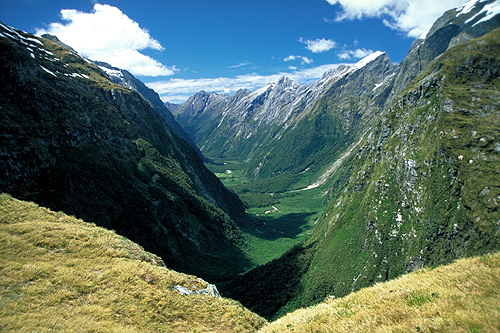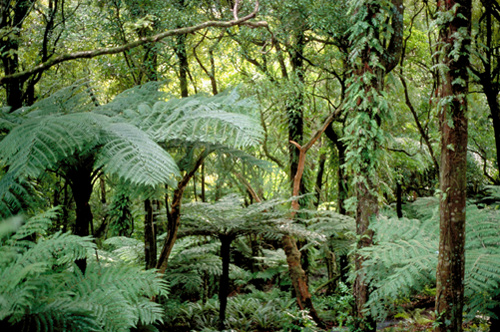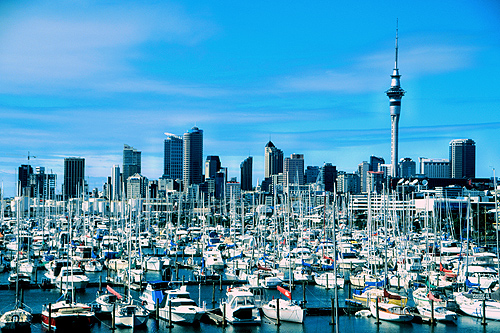New Zealand Travel Information
Location
Sitting isolated in the southern Pacific Ocean lies New Zealand, about 1,600 kilometers or 995 miles east of Australia. The country is made up of two main islands, simply called the North Island and South Island, with a much smaller main island named Stewart Island to the south. There are also other island groups including: Chatham Islands, Auckland Islands, Kermadec Islands, and the Campbell Island group. These outlying islands extend as far north as the subtropical zone and south to the subantarctic.
Geography
The total land area of all islands in the realm of New Zealand is 270,534 sq. kmh (104,454 sq. mls which is similar in size to each of the following: California, Colorado, Japan, Italy, or the United Kingdom.
New Zealand's geography has scenic landscapes the main feature being the Southern Alps - a mountain chain comparable to the European Alps in size. New Zealand is also one of the world's most active volcanic regions, especially in the central North Island as well as the Kermadec Island group to the north. The South Island is the biggest island in the country. It has a great scenic diversity of landscapes including fiords, glaciers, huge lakes, raging rivers, and countless waterfalls including some of the highest in the world. Both islands have extensive rain forests, high country tussock, rural plains, and great beaches. New Zealand's coastline is very indented and irregular making it one of the longest national coastlines in the world.
Climate
New Zealand has a temperate climate meaning four seasons with cold winters and warm summers. The climate is also maritime meaning it is influenced by the coast. The sea regulates temperatures so that there are no hot or cold extremes like you find on continents. There are few areas distant enough from the sea to experience a continental climate, the inland southern portion of the South Island being the one area. Snow falls here in winter while summer tempeartures can be unbearable and reach into the high 30s and low 40s. Generally speaking, the further south you travel in New Zealand the colder it gets, with a climate ranging from something similar to southern England in the south to subtropical in the far north. Most of the country receives abundant rainfall and coupled with volcanic soil, plants thrive here with two main forest types. Conifer–broadleaf forests resemble tropical rainforest and beech forests which are similar to forests in Europe.
The country's location on the 40th parallel south of the equator means the country can experiences strong winds especially during Spring. Wellington the capital city for example receives an annual average wind speed of 29.6km/hr, but can peak to nearly 200km/h because of the city's proximity to two coastlines coupled with its hilly terrain which channel the wind. In the South Island, the prevailing northwesterly wind slams into the Southern Alps mountain range forcing moisture to condence mostly on the western coast giving rise to lush rainforests while the eastern side receives little rain resulting in barren landscape environments. Vegetation increases again as you head toward the eastern coast.
Attractions
Vistors come here to see the country's famed scenic landscapes all compacted into an area small enough to notice huge changes even within one day's travel. With huge mountain ranges, a long indented coastline, raging rivers, large tracts of forests, and a huge variety of volcanic features, it is a hard destination to beat. But there is more to New Zealand than natural attractions. The blending of Maori and European cultures is unique and it is far enough away from the rest of the world to escape many of the world's problems. In short, New Zealand is a modern western nation located in a natural paradise with a relaxed lifestyle, safe environment, and friendly people.
Author & photographer: David Johnson (Virtual New Zealand). Providing a credit or link is appreciated.
Our content: logos, site names, text, photos, and website design are protected by international copyright law.
Original versions of our photos can be purchased / licensed & web versions can be shared subject to conditions.








